14 Best Flowers for Attracting Bees (with Pictures)
-
Kristin Hitchcock
- Last updated:
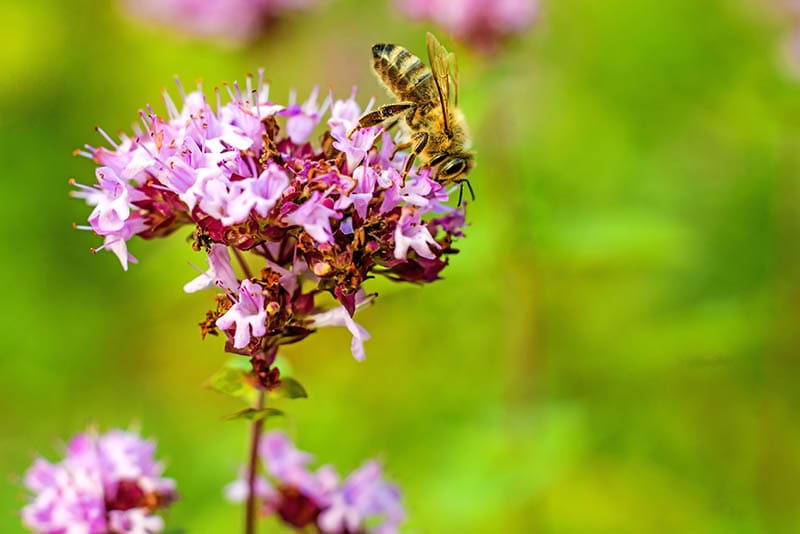
Saving the bees is all the rage due to their significant population drop. A large amount of all the food we consume is pollinated by bees. Therefore, not only are they essential for the environment, but they are also crucial for our survival.
One easy way to help your local bee population is to plant flowers they like. In this way, you can help them produce the food they need.
Luckily, bees aren’t very picky. There are many flowers that they like, though they do like some of them more than others. Here are some options you may want to consider for your garden:

The 14 Best Flowers for Attracting Bees
1. Lavender
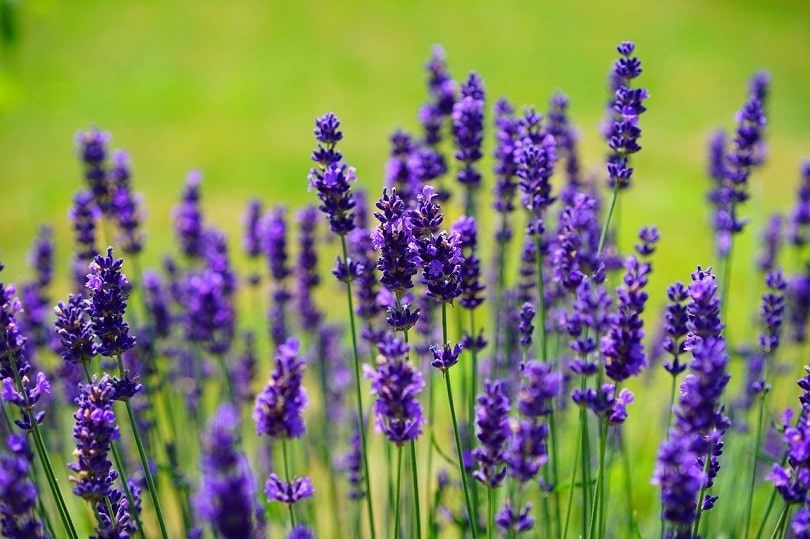
| USDA Zone: | 5–10 |
| Sun Requirements: | Full sun |
Lavender is a plant that both humans and bees seem to like. Not only can you do tons of things with lavender, but it is also one of the bees’ favorite flowers. One study found that lavender was liked by bees over any other flower tested. Therefore, if you want to make a bee garden, lavender is one of the best options you can choose.
We recommend planting at least some lavender plants for this reason. There is no better way to get bees in your yard.
2. Blue Borage

| USDA Zone: | 2–11 |
| Sun Requirements: | Full to partial sun |
The same study also found that bees loved Blue Borage flowers. These flowers are a medicinal herb that is also known as the starflower. The plant’s leaves and flowers are edible, and they are used in several types of native medicine.
This weed grows in a variety of different places but it was originally from the Mediterranean. You may even find it naturalized near you, as it is a hardy plant.
3. Marjoram
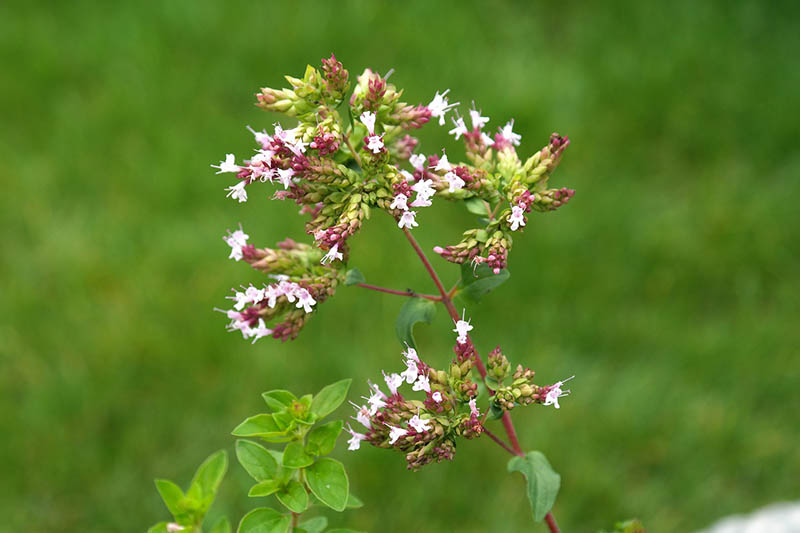
| USDA Zone: | 9–10 (happily; can be an annual outside of this zone) |
| Sun Requirements: | Full sun |
If you’re considering other pollinators, too, then we recommend this plant. Marjoram performs well with bees and most other pollinators out there. If you’re looking for a plant to attract helpful bugs to your garden, this one is your best bet. However, it will attract many other pollinators besides just bees.
4. Pussy Willow
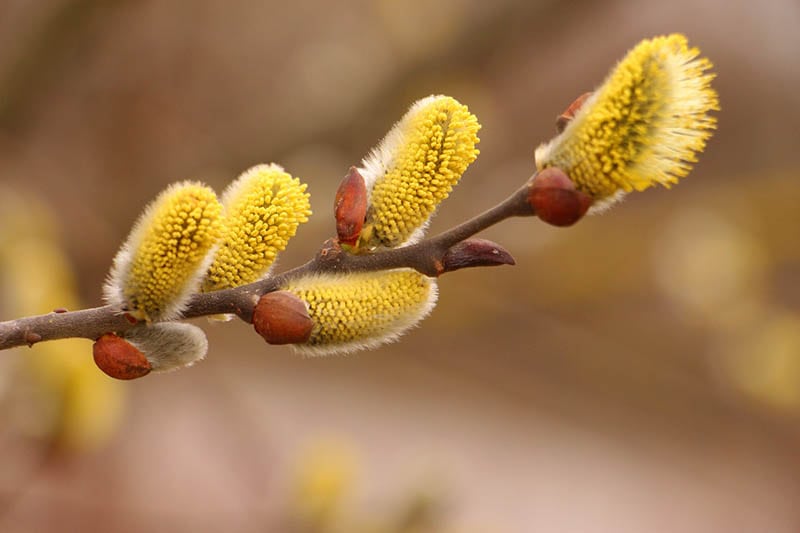
| USDA Zone: | 4–9 |
| Sun Requirements: | Full sun |
When you’re looking to help the bees, it is important to consider the food they need year-round. While bees will stock up on honey over the winter, there are many months when food can be hard to come by. For instance, in the early months of March and April, many hives run low on food. However, new plants aren’t readily blooming.
Luckily, early bloomers can help with this. These early bloomers include the pussy willow. We recommend that everyone have a few early bloomers around to help bees through these tougher months.
5. Abelia
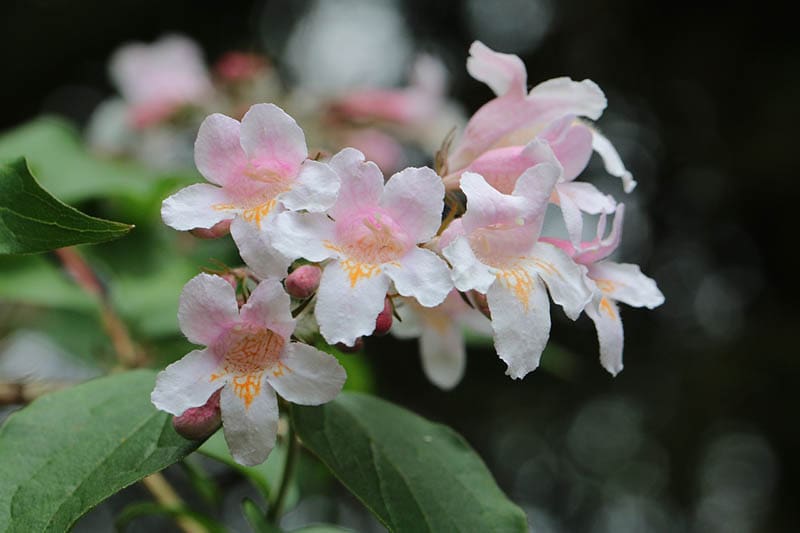
| USDA Zone: | 6–9 |
| Sun Requirements: | Full to partial sun |
There is a reason this plant is often called the “bee bush.” Many bees love it. It attracts a range of different bee species, including honeybees and bumblebees. It’s most prominent in the spring and fall, providing much-needed food at the beginning and end of the season.
6. Lilac
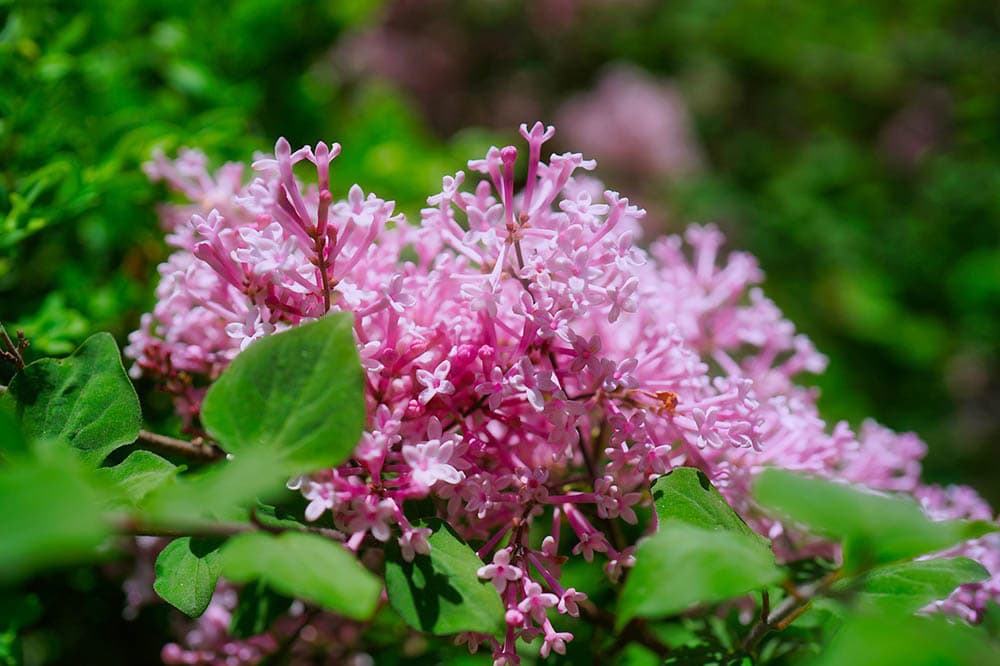
| USDA Zone: | 3–8 |
| Sun Requirements: | Full sun |
Lilacs may not be as well-loved as other plants but they provide much-needed food in the early spring when bees often struggle. Plus, their success has been linked to the success of bees in the area. Therefore, it seems that many bee populations rely on them.
For this reason, we highly recommend that you consider planting some if you’re looking to help your local bee population.
7. Crocus
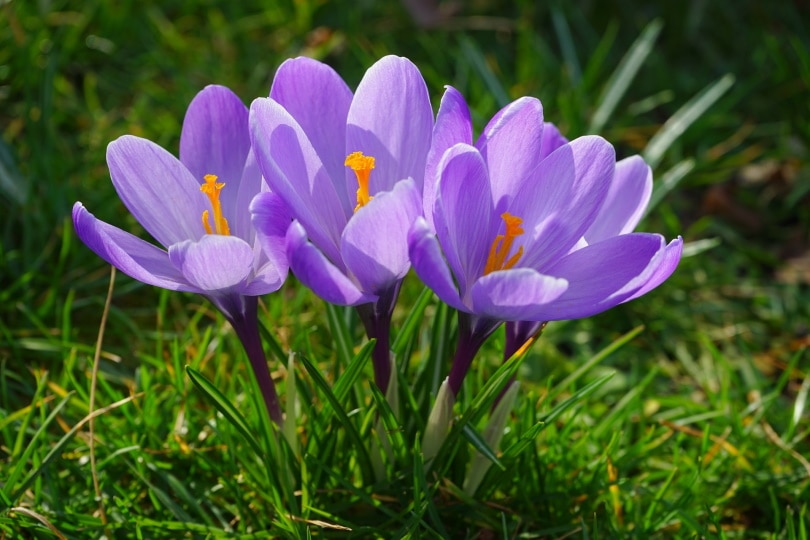
| USDA Zone: | 3–8 |
| Sun Requirements: | Full sun to partial shade |
Bees are most drawn to the crocus flower during the spring months. At this time, food can be hard to find. Therefore, it is likely that these flowers aren’t a bee’s favorite. However, they play an essential role in helping them survive the early spring months.
Plus, these flowers are easy to grow, and they reappear every year. Therefore, you can plant them once and continue to help the bee population for years.
8. Foxgloves
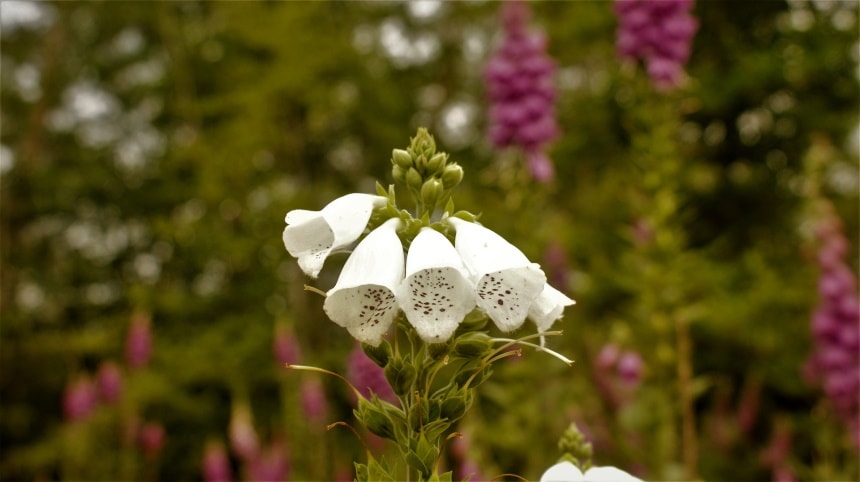
| USDA Zone: | 4–9 |
| Sun Requirements: | Full sun to light shade |
Foxgloves bloom in the early summer and are a favorite of bees. They are fluorescent, which makes them very easy for bees to find. They can even help guide bees at night due to their bright coloration. While they aren’t necessarily a bee’s favorite flower, they can be useful in a bee-friendly garden.
9. Chives
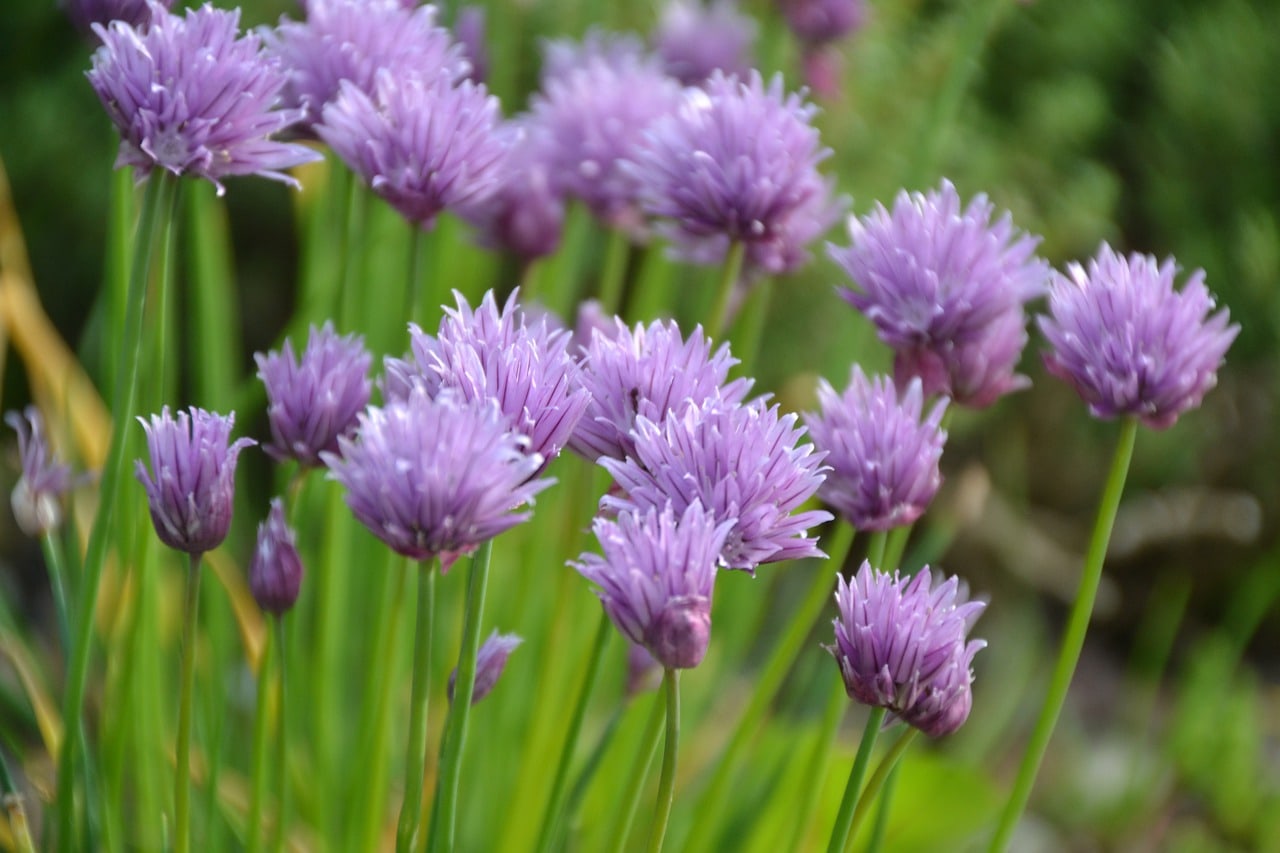
| USDA Zone: | 3–10 |
| Sun Requirements: | Full sun |
If you let your chives flower, they can attract bees. This plant is very easy to grow and doesn’t require much work to maintain. You can use the herb in your kitchen as you need to—and then let the rest of the flower help the local bee population.
10. Monarda

| USDA Zone: | 4–7 |
| Sun Requirements: | Full sun |
This little plant is a reliable garden plant recommended for bees. It also attracts other pollinators, which can be a big boon in your garden. The plant is completely edible and can even help with skin irritation. For this reason, it is often called “bee balm.”
We recommend pairing this plant with other flowers that bees love to create a beautiful bee garden.
11. Goldenrod
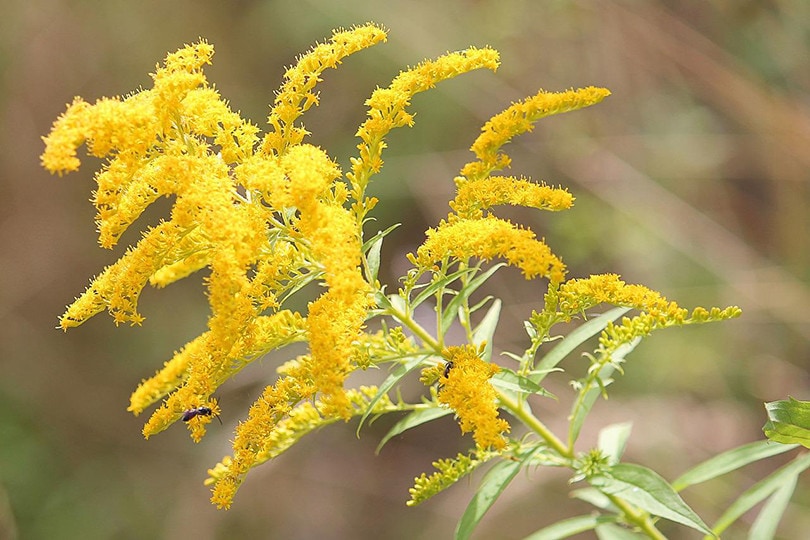
| USDA Zone: | 2–8 |
| Sun Requirements: | Full sun, preferably |
Goldenrod is a native plant in many areas. However, it seems to bloom at a time most people get allergies. Therefore, it leads to many people mistakenly believing that goldenrod is part of the problem (even though it likely isn’t). Sadly, this can lead to the plant getting destroyed.
However, goldenrod provides many health benefits to humans and is used in many traditional medicine practices. It is also well-loved by bees and easy to spot thanks to its bright petals.
12. Black-Eyed Susan
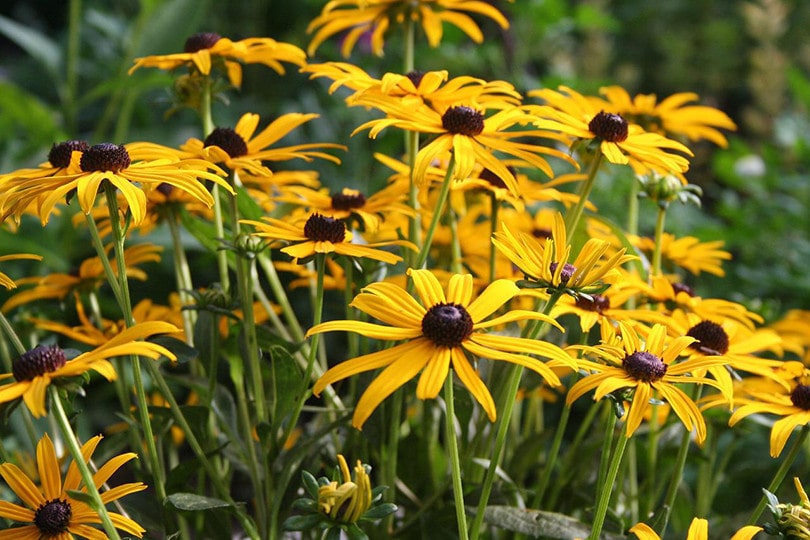
| USDA Zone: | 3–9 |
| Sun Requirements: | Full sun |
While this plant looks similar to the sunflower, it is a wildflower native to the United States. It loves the sun, but it is also very drought resistant. Therefore, it works great in places where other flowers have difficulty growing. It can help bees during times of drought, which can make it an important part of your garden.
13. California Poppies

| USDA Zone: | 8–10 |
| Sun Requirements: | Full sun |
These little, cup-shaped flowers are native to some parts of the United States. Therefore, they are a great flower that you can just let wild – since you don’t have to worry about them invading an area. They come in many different colors, too, making them easy to fit in with any garden design.
14. Lupine
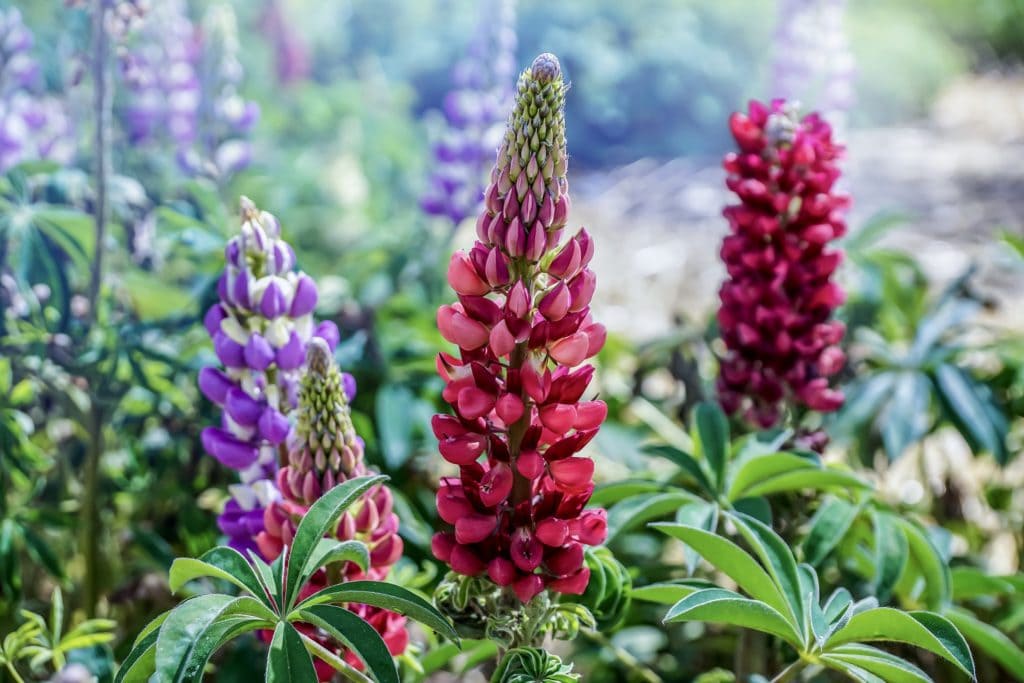
| USDA Zone: | 3–7 |
| Sun Requirements: | Full sun |
The lupine is a tall flower with very visible yellow petals. It usually blooms in the late spring—about the time that many other flowers are blooming too. It is also a bit harder to take care of and it requires tons of sun. While it can grow in the shade, it won’t bloom quite as well. Plus, it can be picky about its soil.
Therefore, we only recommend this plant to those that love it. Bees do like it, but there are easier-to-care-for plants that they like, too.

Final Thoughts
There are tons of different flowers out there that can attract bees. Typically, flowers that provide lots of food and are very visible to the bees are the best option. However, we do recommend planting multiple bee-friendly plants together. This way, you can take advantage of each plant’s strengths and weaknesses.
Some plants might be extremely visible but offer less food, for instance. In this situation, you can plant them alongside plants that provide more food but may be less visible. The visible plants will lead the bees to the others (and the rest of your garden).
Plus, growing multiple flowers also help bees stay fed throughout the year. Different plants bloom at different times.
Featured Image Credit: Hjochen, Shutterstock
Contents
